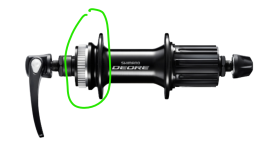Mhmm. I thought it was an older 10 speed hub that was 1.85mm wider than my current 105 11 speed hub, and that's why my spare HG700 cassette came with the 1.8(5)mm spacer? Apparently not:
Bike Freehub & Cassette Compatibility Manual
Sounds like one has to be super careful when buying a hub drive.
Update: I looked at the (German)
Shimano dealer instructions. According to page 8 my bike apparently has an 11 speed mountain bike free hub, since the 1.85mm spacer is NOT needed (it actually does not fit, neither the 11T sprocket nor the lock ring engage with the freehub when the 1.85mm spacer is inserted) . The spacer is needed to mount the HG700 cassette on the 11 speed street freehub.







